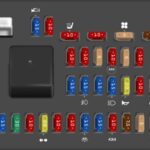The Ediag Obd2 Scanner has emerged as a versatile tool for car owners and auto repair professionals alike. This compact device plugs into your vehicle’s OBD2 port and provides a wealth of diagnostic information, helping you understand and address car issues efficiently. Based on common questions and concerns, this guide will provide a comprehensive overview of the ediag OBD2 scanner, its capabilities, and what you can expect from this tool.
One of the primary advantages of the ediag OBD2 scanner is its broad vehicle compatibility. Users frequently inquire about specific car models, and the general feedback confirms extensive support. Whether you drive a European, Asian, or American vehicle, there’s a high likelihood that the ediag OBD2 scanner will be compatible. From models like the Opel Astra L (2022) and Mercedes Sprinter 907 (2020) to classics like the Jaguar XF (2009) and Chevrolet Camaro Z28 SS (2001), the ediag demonstrates wide-ranging application. Even specific models like the Kia Picanto (2019), Toyota Supra A90 (2019~), Ford Transit (2009), and Renault Trafic (2009) are confirmed to be compatible. This broad compatibility makes the ediag a valuable tool for households with multiple car brands or for workshops servicing a diverse clientele.
Beyond basic diagnostics, the ediag OBD2 scanner offers a range of functions. Users often ask about advanced features such as ECU coding, reset functions, and bidirectional tests. While some advanced functionalities like key programming for specific immobilizer systems (e.g., Honda Elysion RR1 2004, Honda Jazz/FIT 2010) might be limited and require more specialized tools like the K8 Immo, the ediag still covers a significant spectrum of diagnostic and service needs. For instance, it can diagnose parking sensor control units, support Electronic Parking Brake (EPB) service mode for vehicles like the Renault Koleos (2017), and perform diesel particulate filter (DPF) regeneration. However, it’s important to note that certain specific requests, such as radio unlocking on a 2016 Chevrolet or fuel filter filling procedures for specific models like Golf 8 TDI (2022), may not be supported. For features like air suspension fault finding, the ediag generally supports diagnostics, but recalibration capabilities can vary depending on the specific car model.
A crucial aspect for potential buyers is the subscription model. The ediag OBD2 scanner comes with a period of free use, typically one year for the full software suite in the new version. After this initial period, a renewal is required to maintain access to online functions and software updates. Without renewal, the ediag can still perform basic OBD2 diagnostics, but advanced features, online functionalities, and software updates will be unavailable. The renewal cost is structured to offer flexibility. Users can choose to renew access to all software for a yearly fee, or, in some cases (depending on the version), opt for renewal on a per-software or per-car-model basis. The subscription ensures continuous access to the latest vehicle coverage, software improvements, and online support, maximizing the tool’s long-term value. It’s important to understand that while the device continues to function without renewal for basic tasks, the full potential and access to online features and updates require an active subscription.
When considering purchasing an ediag OBD2 scanner, understanding the difference between the old and new versions is beneficial. Both versions are designed for comprehensive system diagnostics and offer features like bidirectional testing and ECU coding. The primary difference lies in the software access and subscription model. The new version typically offers free use of all software for the first year, while the older version might come with a single free software option initially. Both versions, however, do not support CAN-FD protocol. Choosing between the versions often depends on the user’s needs and budget, with the new version offering broader initial access and potentially a streamlined renewal for full software coverage.
In conclusion, the ediag OBD2 scanner presents a robust and user-friendly solution for vehicle diagnostics. Its wide vehicle compatibility, coupled with a range of diagnostic and service functions, makes it a valuable asset for car enthusiasts and professionals. Understanding its features, compatibility, and subscription model will help you leverage the ediag OBD2 scanner to its full potential, ensuring effective vehicle maintenance and repair.
